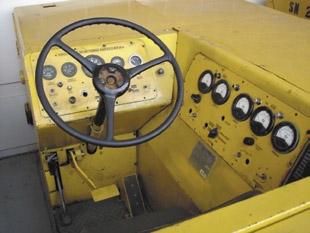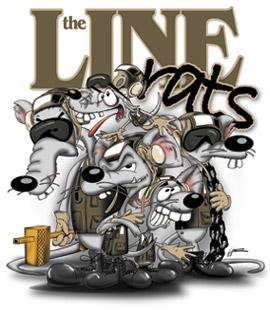
4 minute read
Mishap Stats
from MECH Fall 2006
some materials already in the schoolhouse to build the trainers, he saved even more money than expected.
After contacting NavAir at Solomon’s Island, Md., Petty Officer Bates started building a prototype. Unfortunately, he transferred to a new command before he could see the finished product.
Advertisement
Sgt. Travis Laurion stepped in and took over the task. He worked closely with a contractor, who was put in charge of building the trainers. Several e-mails and three trips to Solomon’s Island ensured they were built to the original requirements Petty Officer Bates had established.
When the first trainers arrived, several bugs had to be worked out. Sgt. Laurion worked tirelessly with his fellow instructors to make sure they had a product that would meet the needs of the school and would be as reliable as possible. AS “A” school officials have replaced the five old original NC-8s with 13 new trainers. Besides increasing the efficiency of the lab, the trainers have an added benefit: They can simulate a wider variety of discrepancies.


Flight, Flight-Related, and Ground Class A Mishaps 05/22/2006 to 09/30/2006

Date Type Aircraft Command
05/27/2006 AH-1W HMLA-169 Aircraft struck water while conducting a post phase functional check fl ight. 05/30/2006 TH-57B HT-8 During fam fl ight, aircraft crashed into trees. Two major injuries and one fatality. 06/16/2006 EA-6B VAQ-129 Aircraft ran off runway on landing rollout and collapsed starboard main landing gear. 06/26/2006 FA-18C VFA-125 Midair collision between two Navy aircraft during local training mission—one fatality. 07/02/2006 AV-8B HMM-365 Aircraft crashed into water on carrier controlled approach—pilot ejected. 09/22/2006 E-2C VAW-123 09/22/2006 S-3 VS-32 Port stab of taxiing S-3 struck starboard turning prop of parked E-2C.

Class B Mishaps Date Type Aircraft Command
06/17/2006 AH-1W HMLA-169 Parked aircraft was struck by forklift while positioning to lift container. 06/22/2006 TH-57B HT-18 During practice autorotation helo landed hard and rolled over. 06/27/2006 EA-6B VAQ-133 Aircraft encountered severe structural damage from hail. 06/28/2006 FA-18C VFA-146 CATM-88 departed aircraft during carrier arrested landing—no injuries. 07/06/2006 FA-18A VMFA-115 Aircraft sustained port engine damage after FOD ingestion. 07/12/2006 UH-1N HMLA-775 Transmission overtorque during power recovery autorotation practice. 08/14/2006 E-2C NADEP NOR Is Engine FOD due to prop malfunction on maintenance ground turn. 08/14/2006 FA-18F Two aircraft damaged by possible lightning strike. VFA-106 Det A
08/16/2006 FA-18C Aircraft struck bird on takeoff roll, fodding port engine. VFA-81
08/21/2006 FA-18C VFA-81 Two similar aircraft collided during night air-to-air over-water training mission. 09/07/2006 CH-53D Aircraft had a hard landing during night operations. HMH-463
09/15/2006 E-2C VAW-112 Starboard center wing and outer wing panels damaged during routine ground maintenance. 09/24/2006 EA-6B VMAQ-3 Prowler struck bird during fl ight. Engine damage discovered during postfl ight inspection. 09/30/2006 F-18D VMFA(AW)-332 No. 1 engine fi re in fl ight, damaging engine, engine components and aircraft frame.
Printed as a supplement to Mech from Naval Safety Center Data Cdr. Ed Hobbs For questions or comments, call Dan Steber (757) 444-3520 Ext. 7247 (DSN 564)

The old NC-8s served their purpose, but the new trainers fi t the role of a transforming Navy.



The instructors now can choose from 20 different gripes that can be installed in the trainers with the flip of a switch. With the NC-8s, an instructor had to remove certain wires to make the equipment react differently so the student would realize the unit had a problem.
Students now can do a pre-operational inspection on each trainer, where, in the past, all pre-ops were simulated. This change drastically has increased student comprehension of the inspection process.
Safety also has been enhanced because of the way components are laid out and the way students are required to troubleshoot. Relays, switches, resistors, cannon plugs, and various other electrical components are much more accessible to the student, eliminating most of the shock hazard. Students also are not exposed to tight quarters with moving parts, reducing the chances of a hand or arm being dragged into a moving fan blade.
Students who already had gone through the electrical phase of AS training with the NC-8s were given an opportunity to use the new trainers. Without exception, the students said it was much easier to comprehend, troubleshoot, and retain knowledge, using the new trainers.
Instructors say they have seen increased comprehension, which allows them to further challenge the students. In turn, the students have a higher level of confidence than ever before, and the fleet and “C” schools receive workers better prepared to handle their electrical-troubleshooting responsibilities. It’s a win-win situation for everyone.


Watch for the comic series, Line Rats, in the winter 2006-2007 issue, due out in January 2007. It promises to provide a somewhat humorous but serious look at various maintenance and safety issues.
Mr. Turner is a civilian instructor at AS(A1) school.












